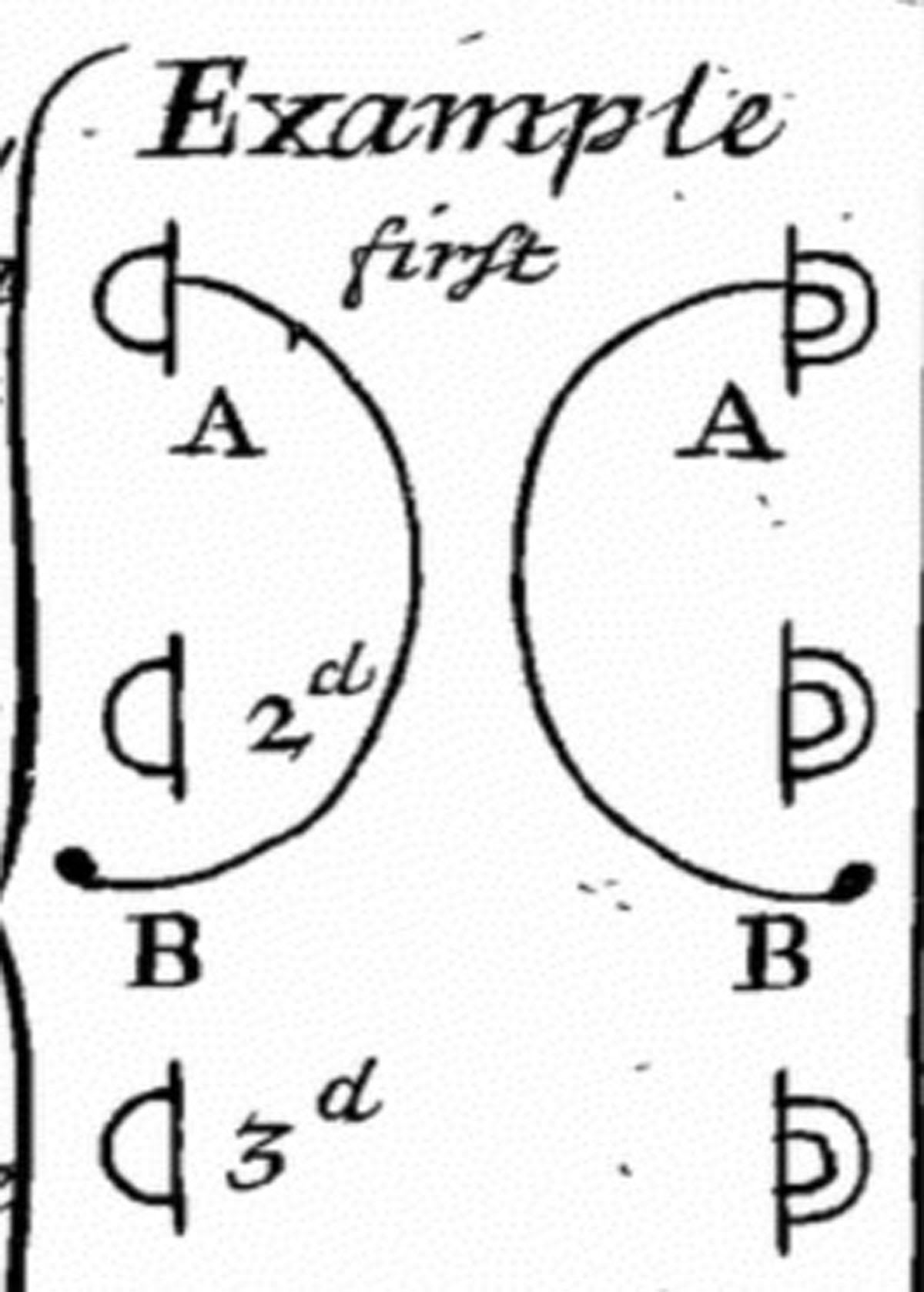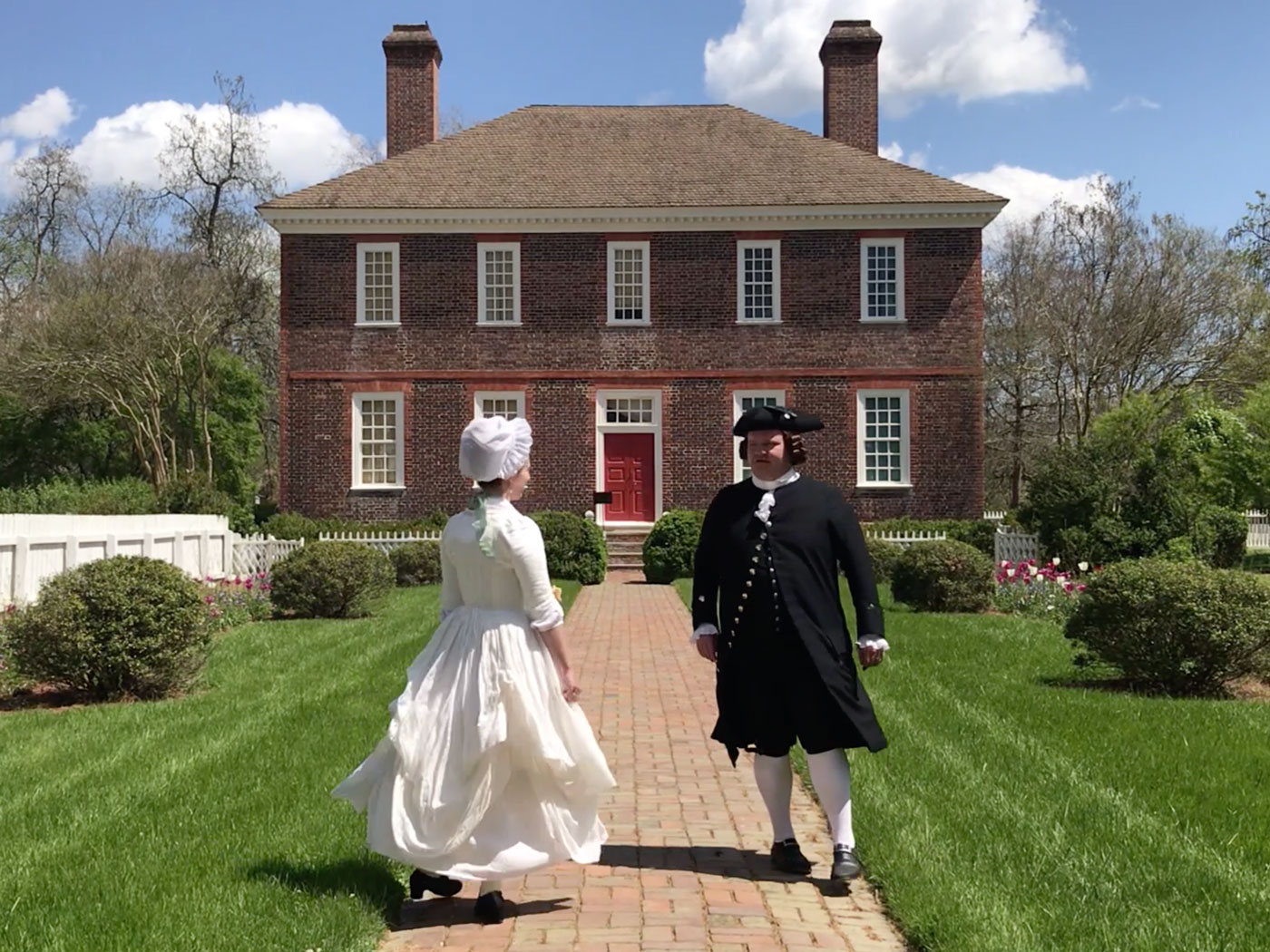So, dear readers, we have now given you an introduction to 18th century dance styles, taken you through your honors, and discussed the basic structure of country dancing. Today, we are going to start learning the foundational steps that make up the vast majority of our dances: Figures. Figures are the backbone of most of our country dances, and once you understand the basics of them, you can put them together in any order (if it matches the music) and dance. My esteemed colleague, Robert, often describes figures to our dancers as very similar to the menu at Taco Bell, “it’s all the same basic ingredients, but you put them together differently and you have a taco versus a chalupa!”
You get the idea… We have distilled the figures found most frequently in 18th-century dancing into thirteen basic figures. We freely admit that these are the BASIC figures of 18th-century dancing, and like everything, there are different variations and ornaments that you can add to all of these as well as completely different figures! But for our purposes, we are sticking with the basics. Today, we are going to go through the first seven figures in our list, focusing on those that require no touching with your partner!*

First and foremost, remember that we are in our established set on the floor with ladies on one side, men on the other. The first figure that we will discuss is Turn Single. The basic Turn Single is, in 4 counts of music, to simply turn once around, in place, over your right shoulder. One can Turn Single up the set, or “up and away”, where everyone turns up towards the head of the set. This means women will turn to the right, men to the left. You can also Turn Single down the set, or going the opposite direction: ladies turning left, men right. There is even a Turn Single “cloverleaf” as we call it at CW. This is where the first couple turns down the set while the second couple turns up the set...thus creating a cloverleaf pattern on the floor.
Katharine and Robert perform a turn single sequence. First, a turn single, then turn single up the set, and then turn single down the set.
The next figure is a Setting Step. The basic Setting Step is a combination of a step to the right, and a step to the left, performed within 4 counts of music. So it would be, step (right) together, step (left) together. This can be very basic, or very jaunty with hops and turning of the feet! You can perform a Setting Step in place, or traveling towards someone else. To travel with the Setting Step, you take those right and left steps in a forward (or backward) motion!
Robert demonstrates the simple setting step
Robert gets fancy on the footwork for setting step.
In that same vein, a Rigadoon is the next figure to discuss. A Rigadoon is a 4 count series of foot movements performed in place. There are several different styles of Rigadons, but for our purposes, the basic Rigadoon has the foot movements of: right kick, left kick, together (demi plié), rise. As far as the direction of the kicks, there are several different opinions on that. We teach our dancers to kick out and slightly to the side to stay in keeping with the way Kellom Tomlinson suggests in his 1735 work, The Art of Dancing Explained. So, count 1: right kick out, count 2: left kick behind, count 3: feet together in first position into a demi plie, then count 4: rise.
Robert demonstrates the footwork for rigadoon.
A Cross is the next figure. A cross is defined as moving past another dancer by the right shoulder, this could be your partner, neighbor or diagonal. For this figure, you will not use your hands, but walk past the person you are crossing with, typically taking their place. This figure can be combined with other figures or flourishes to fill out an 8 count phrase, or as a stand alone figure to fill out a 4 count phrase.
Katharine and Robert perform a cross.
The Gypsy is the next figure. One of our ensemble’s favorite figures, the Gypsy is similar to back to back with one, very saucy addition. To Gypsy you cross another dancer by the right shoulder in 8 counts, continuing to face your partner in a clockwise motion, all the way to place. Basically, you are walking in a circle with another dancer leading with the right shoulder, while facing them, all without touching. Be sure to maintain eye contact with your partner!
Katharine and Robert perform Gypsy.
In that same family is the Back to Back. For this 8 count figure, two dancers will cross each other by the right shoulder, keeping their backs to each other and then cross again by the left shoulder to place. The French term for this figure is “dos a dos”, yes, this is the 18th century equivalent of a dosi-do. For this figure you will again be walking in a circle around each other, however you will not face each other, instead you will face the same direction the entire time. You can also think of it as walking forward for 4 counts with a step to the right, then backing up for 4 counts to your place all the while making a circle around your partner.
Back to back, also known as “Dos a Dos.”
The final figure that we will discuss today is one of the most important figures in country dancing, a Cast or Casting. Country dances, by their very nature, are progressive dances. You are meant to dance with different couples all the way down the set, and all the way back up. The easiest way to accomplish that progressive movement is by Casting. A Cast is defined as moving on the outside of the set. The basic idea is that you will move around another couple to take their place from the outside of the set, rather than from within. We often encourage our dancers to think of Casting as peeling a banana or looping around the second couple. In a 2 couple set to Cast, the 1st couple will face up to the head of the set, face away from each other to the outside and then walk around the 2nd couple taking their place, while the 2s step up. This way the 2s are now in the 1st position, and the 1s are in the 2nd position. That, my friends, is a simple cast. You can cast in counts of 4 or 8 or even 16, but the end result is the same, progression within the set.
Katharine and Robert cast into the second place, with an imaginary Couple 2 stepping into the first place.
We realize we are throwing a lot at you in this installment, but we have faith that you will be good students and practice, practice, practice! Join us next time when we finish our basic figure list with the final six! After we know our figures, we can put them together and dance!
* Note: All videos were filmed while maintaining 6 feet of distance between the dancers.
Katharine Pittman is a Nation Builder for the Colonial Williamsburg Foundation researching and portraying Martha Washington. Her love of history started young as her parents brought her and her brother to CW with frequency as children, grew while getting her degree from Wake Forest University in history and theatre, and cemented in her almost 9 years with the Foundation. Outside of the 18th century, Katharine enjoys spending time with her family, watching Outlander with her girlfriends and drinking massive quantities of coffee.
Robert Weathers has been working as a first-person interpreter at Colonial Williamsburg since January 2008 and portrays Nation Builder George Wythe. When he is not in breeches, he can often be found wearing shorts no matter the weather, and riding roller coasters with his wife Kaitlyn.
